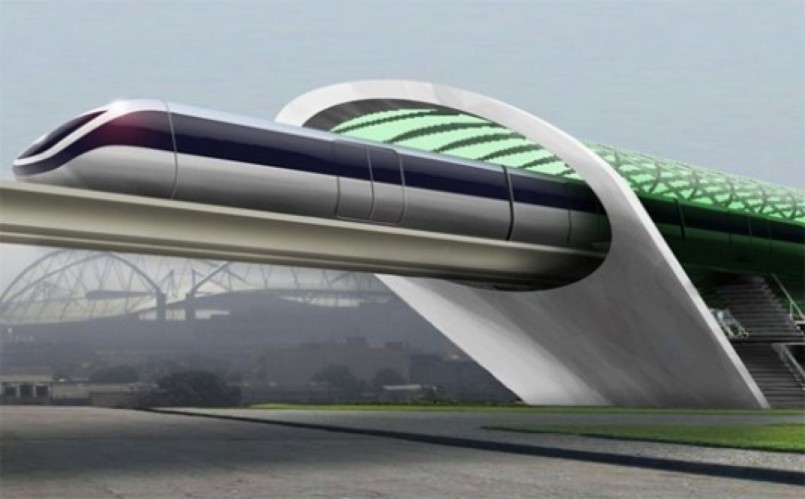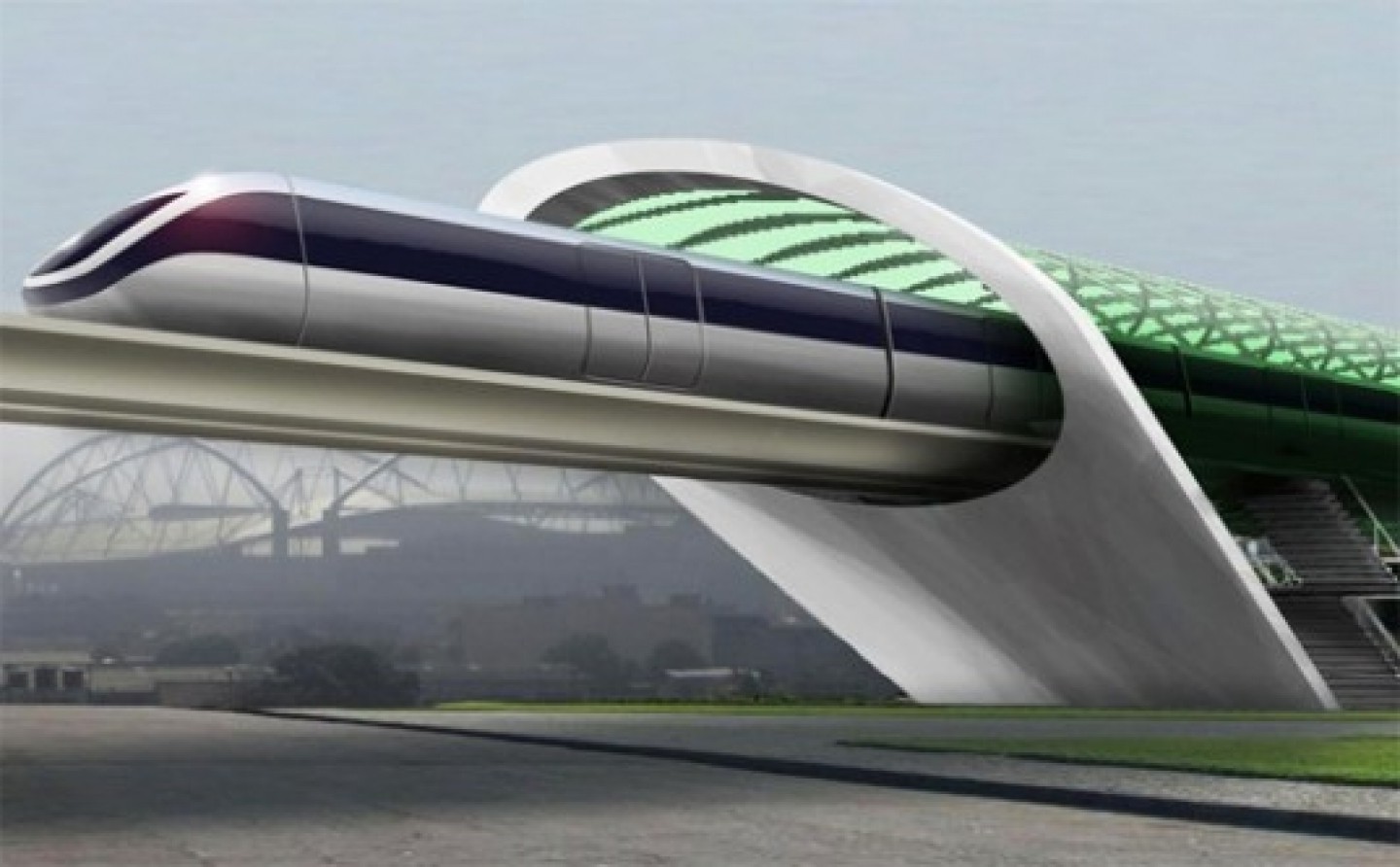
Elon Musk’s Hyperloop Is Going To Make Your Journey To Work Much Quicker
Remember that scene from Charlie and the Chocolate Factory where the rotund German kid falls into the chocolate river, then gets sucked up and spirited away through a pipe? Hilarious, I know, but it also gives us a glimpse of what the future of high-speed travel looks like (the pipe, not the chocolate river). A new transportation system dubbed Hyperloop has entered testing and looks incredibly promising, so what is it, how fast can it go, and how exactly does it work? Here’s the deal:
The Hyperloop is an incredibly fast and efficient new form of travel from the mind of SpaceX/Tesla CEO and futurist Elon Musk. It’s basically a pod or capsule that speeds around inside a large pipe—sort of like those pneumatic tubes that were used to transport documents back in the pre-computer and fax-machine days, only on a much bigger scale. Musk has claimed the finished Hyperloop will be able to cover the distance between LA and San Francisco in as little as 30 minutes (about half the time it takes by air). It will also be weatherproof, crashproof and always on time—lofty goals for any form of public transport.
The system will be powered entirely by solar energy, and will use magnetic rails to eliminate friction and accelerate the capsules. The tube itself will have air removed to create a vacuum and minimise drag, and it will be suspended above the ground for a smoother ride and to protect against earthquakes. It’s envisioned that each capsule will carry 6-8 passengers, with departures happening every 30 seconds. Total cost of the proposed LA to SF line? Anywhere from $6-100 billion, depending on who you ask.
The design of the Hyperloop makes it inherently energy-efficient and insanely fast, with estimated top speeds in excess of 700 miles per hour. Its frictionless operating environment and use of renewable energy would likely limit the cost of running and maintaining a Hyperloop system, so ticket prices could end up being surprisingly cheap (Musk himself estimates it could be as little as $20 for a one-way trip). If the technology takes off, the Hyperloop would completely revolutionise public transport. You could potentially commute to work from another state entirely and still enjoy a journey time of an hour or less, or travel coast-to-coast in less time than it takes to watch a Peter Jackson movie.
Musk is a very busy man with Tesla and SpaceX, so he’s stepped back and opened up the competition for building the first Hyperloop to any companies who dare take up the challenge. California startup Hyperloop Technologies has secured 50 acres of land in North Las Vegas to begin testing, while rival company Hyperloop Transportation Technologies are hot on their heels with a test track of their own in California. They’ll both be looking to conduct successful full-speed tests with empty capsules and iron out any kinks, before tentatively moving onto live passenger trials. To rollout Hyperloop to the mainstream, however, you’d be talking about building a massive infrastructure network all across the nation. It’s not something that can be done overnight, even with a billionaire’s resources, so don’t expect to feel the g-forces for some time yet.
Q: Is the Hyperloop the future of transport, or just pie in the sky? Share your thoughts in the comments below.
 David Carroll is a freelance writer, self-published author, and chief health-nut at thepaleotoolkit.com. Outside of work, he loves hurling (an amazing Irish sport), playing video games and hanging out with his dogs. Follow him on Twitter (@DavidAshCarroll) and Google+.
David Carroll is a freelance writer, self-published author, and chief health-nut at thepaleotoolkit.com. Outside of work, he loves hurling (an amazing Irish sport), playing video games and hanging out with his dogs. Follow him on Twitter (@DavidAshCarroll) and Google+.



